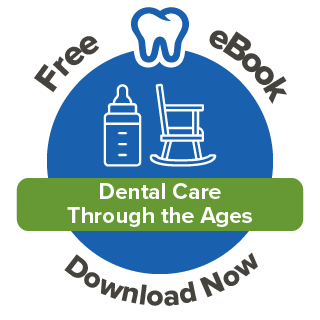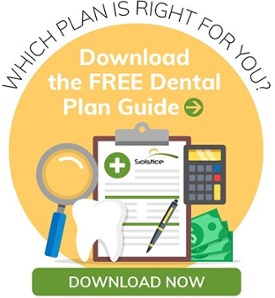By Andrew Hickey on Jul 26, 2023 @ 02:00 PM
We can never predict when an emergency will occur. And dental emergencies are no exception. It could be a sudden toothache, a broken tooth, or a knocked-out tooth. Knowing how to manage these unexpected situations can make all the difference.
That's why we've created the ultimate guide to managing dental emergencies. From solutions you can use at home to finding an emergency dentist, we've got you covered. Because when it comes to your dental health, every second counts.
Key takeaways:
- A dental emergency is defined as uncontrolled bleeding or conditions that affect your airway.
- Assess the situation, manage any bleeding or pain, and contact a dentist.
- Put together an emergency dental kit with supplies like dental floss, cotton balls, pain relievers, and a small mirror.
- Take preventive measures like practicing good oral hygiene and a healthy diet.
- Ask for recommendations on emergency dentists, search online, and give them a call.
- Learn about your insurance coverage for dental emergencies.
Understanding dental emergencies
Dental emergencies can occur suddenly and range from mild to severe. Understanding what constitutes a dental emergency is crucial for knowing how to respond.
The American Dental Association (ADA) defines dental emergencies as “potentially life threatening and requiring immediate treatment.” That includes uncontrolled bleeding and conditions that "potentially compromise the patient’s airway." This may be the result of issues such as severe toothaches, chipped or broken teeth, loose or broken braces, and excessive gum bleeding.
It’s important to know that not all dental issues are considered an emergency. This could include minor toothaches, mild gum irritation, or a lost dental filling that is not painful. These can typically wait for a regular dental appointment. For professional guidance, call your dentist’s office or an emergency room (if it’s after hours). Now that you understand the types of dental emergencies, let's explore what steps you can take.
Steps to take during a dental emergency.
When faced with a dental emergency, it's important to stay calm and follow these steps to increase the chances of a successful outcome:
- Assess the situation: Start by looking at the severity of the dental emergency. Identify the cause of the pain or discomfort. You will also need to determine if there is any visible damage to the teeth or gums.
- Control bleeding: If there is bleeding, gently rinse your mouth with warm saltwater. Use a clean piece of gauze or a tea bag to apply gentle pressure to the affected area. If the bleeding doesn't stop after 10 minutes or is severe, seek immediate professional help.
- Manage pain: Over-the-counter pain relievers like Ibuprofen and Aspirin can help manage the pain temporarily until you can see a dentist. If using Aspirin, avoid placing the tablet directly on the affected area. It can cause tissue damage.
- Preserve knocked-out teeth: If a tooth gets knocked out, seek dental attention immediately. Meanwhile, manage it carefully by the crown (the top part). Avoid touching the root (the bottom part). Rinse it gently with milk or saline solution to remove any debris. And try to reinsert it into the socket if possible. If it can't be reinserted, place it in a container with milk or saliva to keep it moist.
- Contact a dentist: Call your dentist's office or an emergency dental clinic as soon as possible. Explain the situation and provide any necessary details. They will guide you on the next steps and schedule an appointment if needed.
By following these steps, you can ensure that you're taking the appropriate actions during a dental emergency. It's also important to have some essential supplies at home. You can use these for dental emergencies until you can get to a dentist.
Supplies for managing dental emergencies at home.
Having a dental emergency kit at home can be invaluable when unexpected dental problems arise. Here are some essential supplies to include in your kit:
- Dental floss: This can help dislodge food particles that may be causing discomfort or pain between teeth.
- Cotton balls or gauze: They can be used to control bleeding or apply pressure to a wound.
- Temporary dental repair kits: There are over-the-counter temporary repair kits from brands like Dentek and Dentemp. They can be used to cover a cavity or broken tooth temporarily until you can see a dentist. There are also products to temporarily reattach a dental crown or filling that has come loose.
- Orthodontic wax: This can provide temporary relief for any discomfort caused by braces or wires.
- Salt packets: Salt packets can be used to make a saltwater rinse, which can help soothe gum irritation or mouth sores.
- Pain relievers: Over-the-counter pain relievers can help manage pain until professional help is available.
- A small mirror: A small mirror can help you assess the damage or locate any foreign objects stuck between teeth.
It's important to remember that these are temporary solutions, and professional dental care is still necessary. Next, let's explore some other steps you can use until you see a dentist.
Preventing dental emergencies
While dental emergencies can't always be avoided, there are steps you can take to reduce the risk. Here are some preventive measures to help protect your dental health:
- Practice good oral hygiene: Brush your teeth at least twice a day, floss daily, and use mouthwash to maintain good oral hygiene. Regular dental check-ups and cleanings can also help detect and prevent dental problems early on.
- Use protective gear: If you participate in contact sports or engage in activities with a risk of dental injury, wear a mouthguard. Similarly, if you grind your teeth at night, consider using a nightguard.
- Avoid chewing on hard objects: Chewing on items like ice and hard candies can potentially chip or break your teeth.
- Maintain a healthy diet: Limit your intake of sugary foods and beverages. They can contribute to tooth decay. Instead, opt for a balanced diet focusing on fruits, vegetables, and calcium-rich foods.
- Avoid using your teeth as tools: Don't use your teeth to open packages, tear tape, or any activity that puts unnecessary stress on them.
You can significantly reduce the risk of dental emergencies and maintain good dental health. However, accidents can still happen. So, it's crucial to know how to find an emergency dentist when the need arises.
How to find an emergency dentist
- Contact your dentist: They may have emergency hours or be able to refer you to an emergency dentist.
- Ask for recommendations: Reach out to friends, family, or coworkers who have had positive experiences with an emergency dentist. These recommendations can help you find a trusted professional.
- Search online: Use search engines and directories to find emergency dentists in your area. Read reviews and check their website for more information about their services and availability.
- Call dental emergency services: Once you’ve found an emergency dentist give them a call. They can provide information and assistance.
When contacting an emergency dentist, explain the nature of your issue. Inquire about their availability, fees, and accepted insurance plans. It's important to clarify these details to avoid any surprises. Additionally, familiarize yourself with your dental emergency insurance coverage to ensure you understand what expenses are covered.
Dental emergency insurance coverage
Insurance coverage for dental emergencies varies depending on your specific insurance plan. It's important to review your insurance policy and understand your coverage. Here are some key points to consider:
- In-network vs. out-of-network dentists: In-network dentists usually have negotiated fees with lower out-of-pocket expenses for you. However, there may be coverage for out-of-network dentists when receiving emergency services. Although your out-of-pocket costs could be higher.
- Coverage limitations: Some insurance plans may have limitations on the number of emergency visits or specific procedures covered.
- Pre-authorization requirements: Some insurance plans require pre-authorization for emergency dental services. Make sure you understand these requirements and follow the necessary steps for coverage.
- Out-of-pocket expenses: Even with insurance coverage, you may still have out-of-pocket expenses. These include deductibles, copayments, or coinsurance. Review your insurance policy to understand your financial responsibilities.
By understanding dental emergencies, you can respond quickly and effectively. We hope this guide equips you with the step-by-step instructions you need to navigate these stressful situations with confidence.
Disclaimer: This resource is provided for educational and informational purposes only and does not constitute providing medical advice or professional services. The information provided should not be used for diagnosing or treating a health problem or disease, and those seeking medical advice should consult with a licensed physician.
Want to have Solstice benefits?
Call our sales team at 877.760.2247 or email Sales@SolsticeBenefits.com
Already have Solstice benefits?
See your plan details by going to https://www.mysmile365.com/ or calling us at 1.877.760.2247.





comments